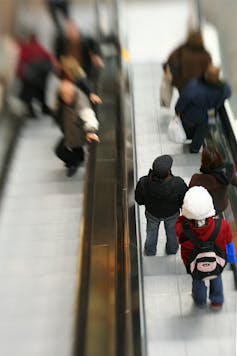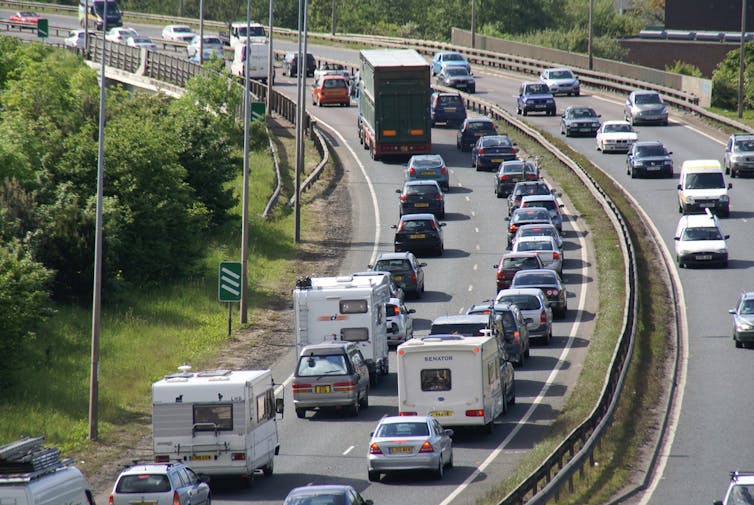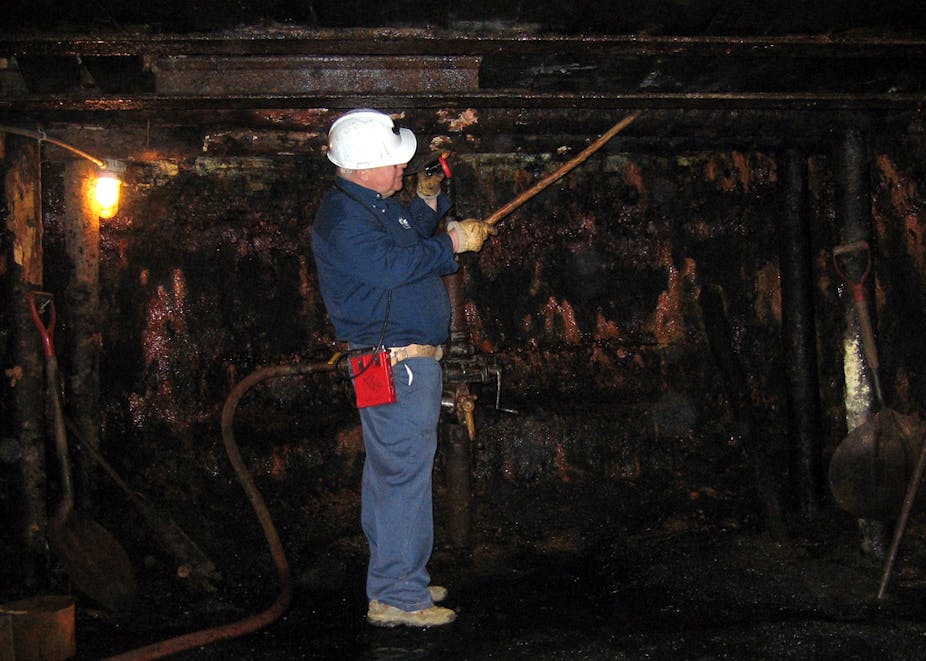OBESE NATION: It’s time to admit it - Australia is becoming an obese nation. This series looks at how this has happened and more importantly, what we can do to stop the obesity epidemic.
Today Anthony Capon provides an energy system perspective of obesity while Rosemary Stanton reviews two recent books on what the epidemic means and how to end it.
We sometimes forget that the extra kilograms on our waistlines are a “carbon store”. So it’s timely for this website to publish a series on the obesity epidemic during the week when Australia’s carbon tax comes into effect.
Most of the debate about carbon regulation focuses on extrasomatic energy. That’s energy produced and used outside the human body (such as by power stations, solar panels and motor vehicles). Whereas, obesity is a problem with our somatic (human body) energy account.
But there’s value in understanding the obesity epidemic from a wider, energy system perspective.
In the second half of the 20th century, the ready availability of fossil fuel energy enabled sedentary ways of moving, working and recreation. We now use motor vehicles to propel ourselves around cities and towns, and escalators, lifts and movable walkways to move around buildings.

Most Australians use labour-saving devices on a daily basis. We use washing machines, vacuum cleaners and dishwashers in our homes. We use motorised lawn mowers and leaf blowers in our gardens. And many Australians spend much of their working day sitting at a desk. Even labouring work, which traditionally required intensive physical activity, can now be relatively sedentary because of the diverse range of power-assisted tools and motorised equipment available.
Increasingly, people are choosing television and video games rather than active forms of recreation. At the same time, we live in an era in which food energy is readily available and relatively cheap. And our food supply is highly dependent on fossil fuels for fertilisers, transport and other inputs.
As individuals, our fat stores arise from an energy imbalance – too much energy in, and too little energy out. So, if we think about obesity from an energy system perspective, this combination of sedentary ways of living, and food intake (in excess of need), has been enabled by the ready availability of fossil fuel energy in recent decades.
So obesity, too, can be seen as a carbon store on our waistlines originally sourced from coal mines and oil wells. Clearly, this is not a sustainable way of living. But that doesn’t mean this is a call for a return to old-fashioned ways of living – the so-called “good old days”.

Rather, it’s a call for us to understand that there have been unintended consequences from technological advances. We need to acknowledge these unintended consequences and account for them when making policy.
An energy system perspective enables us to understand the obesity epidemic as a consequence of maladaptation to our contemporary habitat, which is now mostly urban. We have progressively designed much of the opportunity for incidental physical activity out of this habitat.
To address this, somatic energy (obesity) needs to become a central consideration in sustainability policy. Government, industry and community leaders should better understand these relationships and ensure that our response to climate change, and other global environmental changes (such as urbanisation and industrial food production), accounts for them.
We should plan, design and develop our cities to enable us to do most of our daily business (such as getting to school and work, shopping for food and other necessities, and accessing health services) by walking, cycling and using mass transit. That means “engineering” physical activity back into our urban environment and our daily life.
Policies that encourage active urban travel, and discourage private motor vehicle use, will provide larger health benefits than policies focusing on lower emission motor vehicles. So while electric cars don’t directly produce emissions (both toxic air pollutants and greenhouse gas emissions), for instance, drivers are still sedentary and don’t have the health advantages of active travel.

More generally, there’s an important and positive message here – low carbon ways of living are healthy ways of living.
The concept of health co-benefits from action on climate change is now recognised as relevant to sustainability policy. These “co-benefits” - additional health benefits beyond those from the mitigation of climate change - extend from physical activity to diet (a vegetable-rich diet being better for health and leading to less greenhouse gas emissions from food production) and air quality (a transition to renewable energy generation will reduce toxic air pollution from coal-fired power stations).
We should ensure that human health and well-being is central in energy and sustainability policy. As we move into the era of carbon pricing and regulation, we should seize the opportunity to realise these additional health benefits from low carbon ways of living.
Low carbon human waistlines (healthy population weight) could be an additional benefit of effective carbon regulation in Australia.
This is part twelve of our series Obese Nation. To read the other instalments, follow the links below:
Part one: Mapping Australia’s collective weight gain
Part two: Explainer: overweight, obese, BMI – what does it all mean?
Part three: Explainer: how does excess weight cause disease?
Part four: Recipe for disaster: creating a food supply to suit the appetite
Part five: What’s economic growth got to do with expanding waistlines?
Part six: Preventing weight gain: the dilemma of effective regulation
Part seven: Filling the regulatory gap in chronic disease prevention
Part eight: Why a fat tax is not enough to tackle the obesity problem
Part nine: Education, wealth and the place you live can affect your weight
Part ten: Innovative strategies needed to address Indigenous obesity
Part eleven: Two books, one big issue: Why Calories Count and Weighing In
Part thirteen: Want to stop the obesity epidemic? Let’s get moving
Part fourteen: Fat of the land: how urban design can help curb obesity
Part fifteen: Industry-sponsored self-regulation: it’s just not cricket
Part sixteen: Regulation and legislation as tools in the battle against obesity

